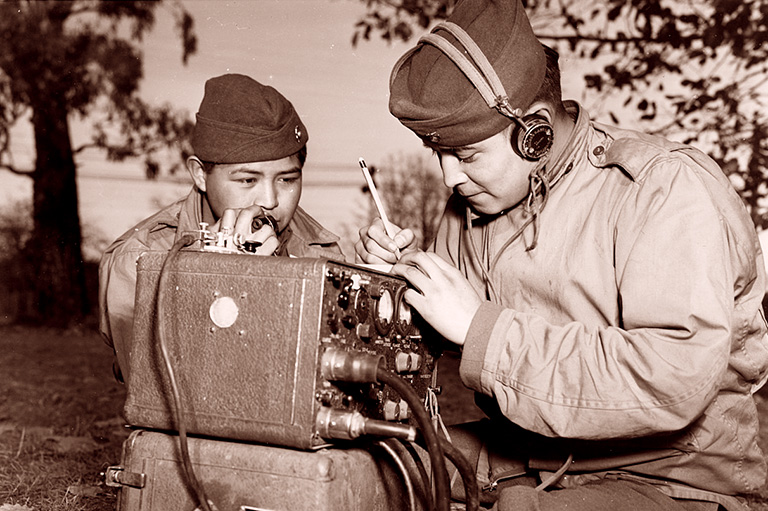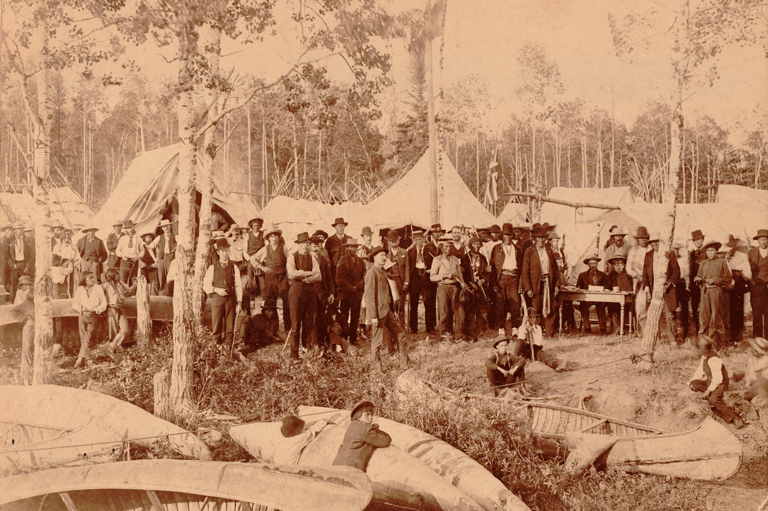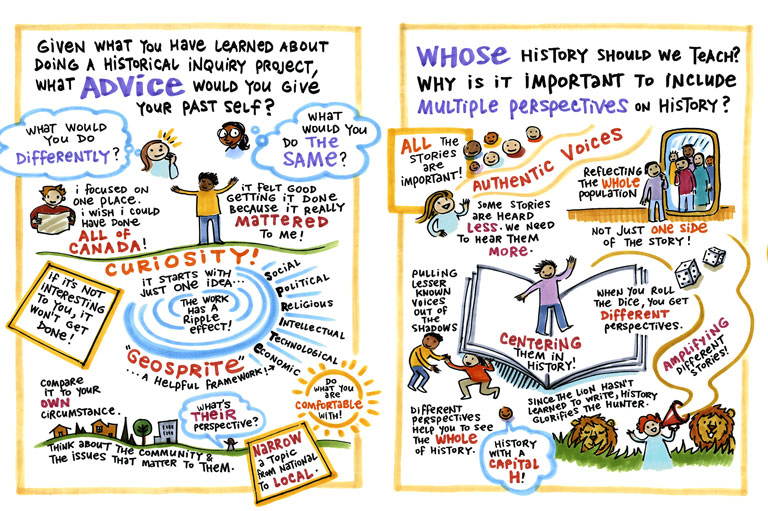Discover a wealth of interesting, entertaining and informative stories in each issue, delivered to you six times per year.
Expo 67 “Man & Who’s World?” Introductory Lesson
This example lesson plan from the Expo 67 Unit Plan is inspired by the articles “Mission Impossible,” “Mad Men of Expo,” “Welcome to Utopia,” and “Dressed for Success” in the June-July 2017 issue of Canada's History magazine.
Grade Levels: Grades 9/10
Subject Area: Social Studies, History
Lesson Overview
Note: This is one of three example lesson plans in the Expo 67 Unit Plan. If required, please see the Unit Plan overview.
This lesson can be used:
- as a course introduction
- as a unit introduction
- as a hook to get students exploring the idea of World Fairs/Expos in history to help understand the significance of hosting such an event in Canada.
Following the introduction of historical expositions, the lesson transitions to:
- having students pull out specific details and themes around Expo 67
- having students evaluate primary source images from Expo 67
- having students work towards discovering the 1967 theme of “Man and His World” through the images provided.
The lesson concludes with some preliminary planning for the summative task of designing an Expo 2017. All of this is done using primary source images from the “Mission Impossible” article, in addition to frameworks provided by the TC2 Learning Consortium.
Time Required
Two class periods with some work assigned for homework at the end of day one
Historical Thinking Concepts
This lesson plan uses the following historical thinking concepts: establish historical significance, use primary source evidence, identify continuity and change, analyze cause and consequence, and take historical perspectives.
Learning Outcomes
Students will be able to:
- Identify the concepts that best define the Expo 67 experience (Remembering (refering to Bloom’s Taxonomy))
- Inquire deeply into the Expo '67 experience by designing inferential questions (Understanding)
- Summarize the Expo '67 experience from multiple perspectives (Understanding)
- Prioritize/rate/rank events in 20th century that contributed to ideals espoused by Expo '67 (Evaluating)
- Explain the importance of Expo '67 in defining a new vision for Canada into twenty-first century (Evaluating)
- Deduce and explain the absence of those voices not represented/well—represented at Expo '67 (Evaluating)
- Create informed judgements on the role/place/significance of Expo '67 in twenty-first century Canadian history (Synthesize)
- Propose their own key Canadian defining moments worthy of the ideals espoused at Expo '67 and demonstrate them through creative media (Synthesize)
- Begin to consider how to design/construct/build their own Expo 2017 as compared to the Expo '67 experience, 50 years hence (Synthesize)
Students will:
- Interpret images provided in the ‘Mission Impossible’ article and evaluate them using the TC2 “Explain the Image” template.
- Images (see materials/resources for links):
- Katimavik
- Woman with stamp fan advertisement
- Passports
- Minirail
- Labelled map with pavilions
- Expo uniforms
- Queen Elizabeth II and Lester B Pearson
- Gondola image
- Images (see materials/resources for links):
- After the groups share their ideas and speculations around their assigned photos, reveal that they are all from one event: Expo 67. Then briefly highlight the history of the World’s Fair/Expositions by reviewing previous locations and their themes and focuses (available with thumbnail images here http://www.bie-paris.org/site/en/expo-timeline).
- Once the size/scale and significance of Expos has been established, return to the images of Expo 67 with that perspective in mind.
- Collectively review the common themes/messages of the introductory images to uncover/hypothesize the theme of Expo 67 (“Man and His World”).
- Break down the possible subcategories that the theme “Man and His World” implies. For example, technology, gender, international relations, British and American influence, minority voices in Canada, environment, Canadian Identity.
- Categorize the images above into the themes established by the class on the Expo ’67 Concept Wall
- Homework: Find one picture that would fall under each of the above themes that you think could be used in a brand new Expo 2017
Teacher Will:
- Create an Expo 67 Concept Wall with the main themes as headings. For example, technology, gender, international relations, British and American influence, minority voices in Canada, environment, Canadian Identity. The images from this lesson can be placed under the most appropriate headings as determined by the class. This wall can be digital or a board within the class. It should have space to add images and ideas as the course/unit progresses.
- Have students create an “Expo” portion of their notes, whether digitally or in binders, to begin planning their summative: Expo 2017.
- Begin to foster the idea of “EXNO” with a final column on the Concept Wall of ideas/themes/images/defining moments that would NOT be included in a display of Canadian pride at Expo 2017. Note what has hit the cutting room floor/ was debated/ is contentious in class and start an opposing “EXNO” Wall to be revisited as well throughout the course to highlight the ‘Perspectives’ Thinking Concept.
Materials/Resources
- Unit Plan Overview
- Explain the image template
- Image of Katimavik from the Toronto Star, also see the image of Katimavik from “Mission Impossible” in the June-July issue of Canada’s History magazine
- Woman with stamp fan advertisement from “Mad Men of Expo” in the June-July issue of Canada’s History magazine
- Passports from “Mad Men of Expo” in the June-July issue of Canada’s History magazine, also see the interior of the passports
- Minirail from “Welcome to Utopia” in the June-July issue of Canada’s History magazine (Photo #5)
- Labelled map with pavilions
- Expo uniforms from “Dressed for Success” in the June-July issue of Canada’s History magazine
- Queen Elizabeth II and Lester B Pearson
- Gondola image





